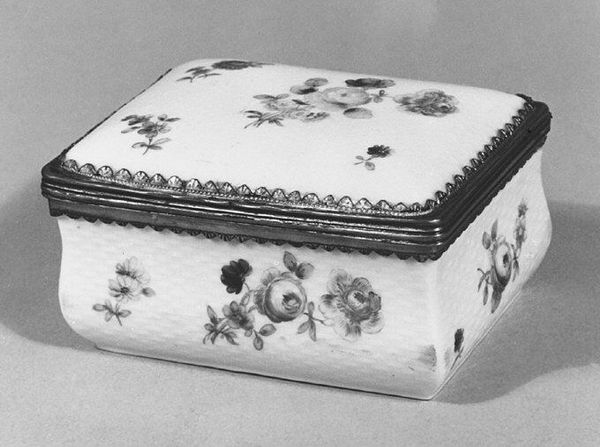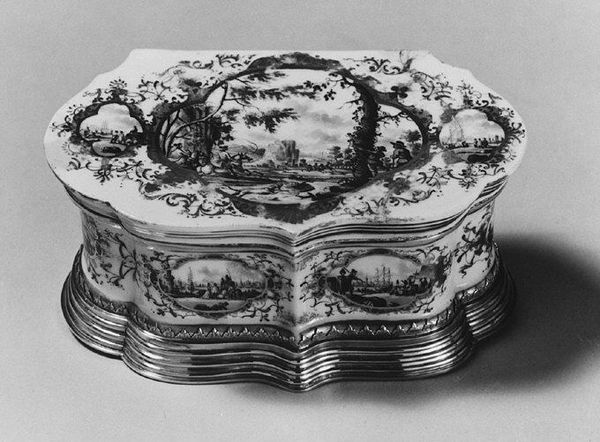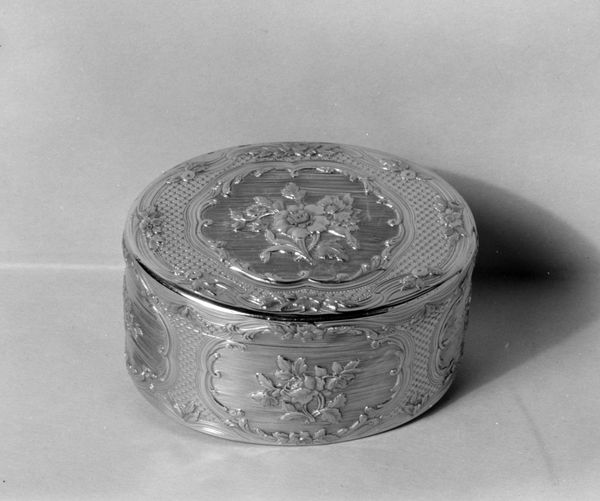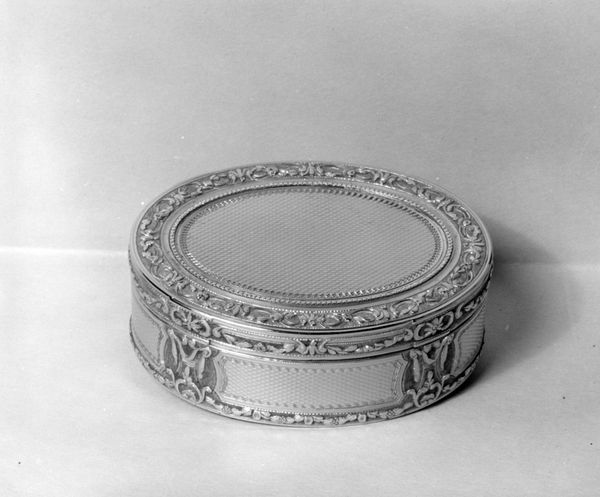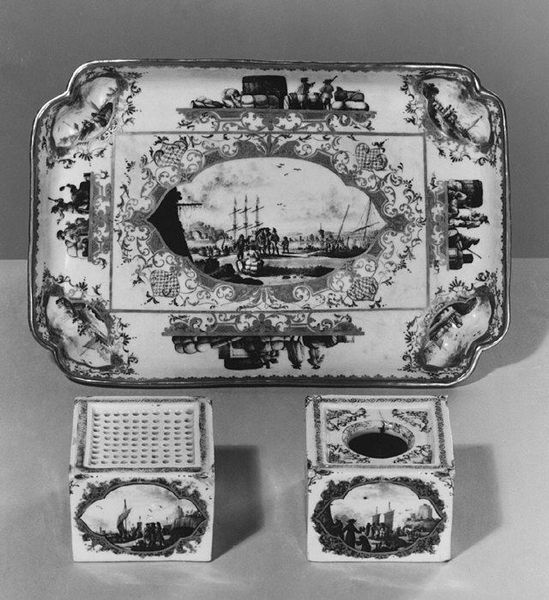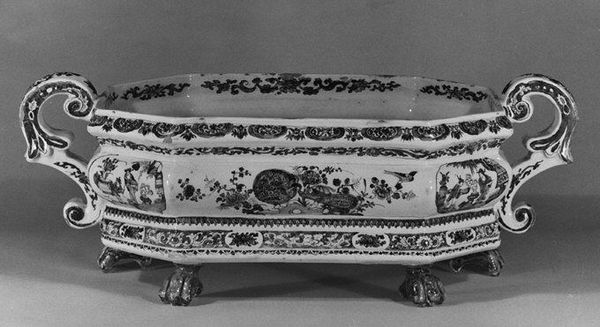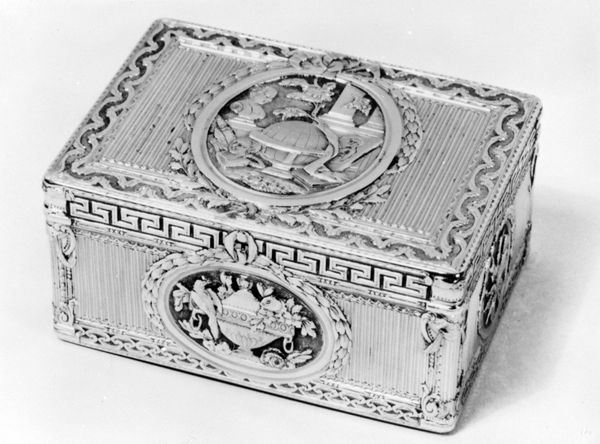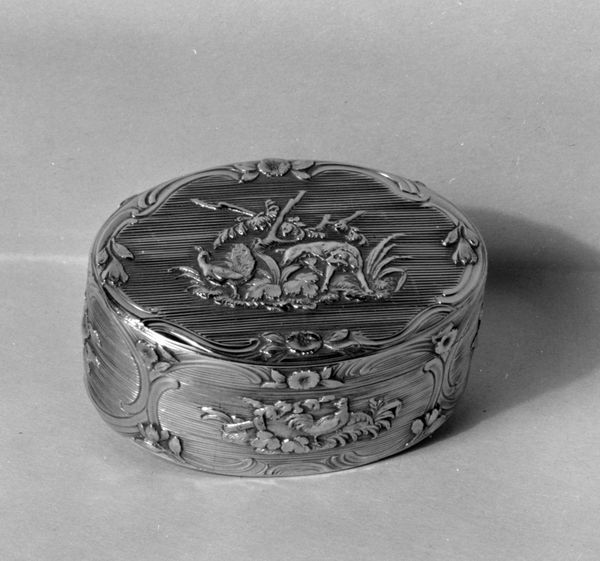
Dimensions: Overall: 1 1/16 × 3 5/8 × 1 5/8 in. (2.7 × 9.2 × 4.1 cm)
Copyright: Public Domain
Editor: Here we have "Box" by Jacques François Varin, dating from 1788-1789. It’s currently housed at the Metropolitan Museum of Art. The box is Rococo style and seems to be made entirely of metal. It strikes me as incredibly ornate, almost excessively so. What’s your interpretation of it? Curator: Its excessive ornamentation tells us quite a bit about the social context in which it was made. Rococo, especially objects like this, signified status and wealth in late 18th-century France. The detailed metalwork wasn't just decorative; it was a display of power and privilege just before the French Revolution. Editor: So, it's less about aesthetics and more about…political messaging through luxury? Curator: Precisely. Consider the timing. The object’s very creation coincided with a growing disparity between the aristocracy and the commoners. Objects such as these become powerful symbols of the aristocracy when considering the art world as complicit. Do you notice how the decoration seems almost relentless, a controlled explosion of motifs? Editor: Yes, there is an almost frantic level of detail, a repetition that’s both beautiful and maybe a little suffocating? Were boxes like this commonly commissioned or prominently displayed? Curator: Absolutely. Pieces like this were often prominently displayed, sometimes even given as gifts to cement political or social alliances. Their presence communicated a deliberate message about the owner's position. The creation of an expensive object in itself may be construed as an economic flex and the aesthetic itself only further distances this piece from common persons. This work may be studied and examined to determine Varin's intended message about this piece, although we are able to analyze it given current societal norms and circumstances. Editor: That makes a lot of sense. It’s fascinating to see how a seemingly simple object can reflect such complex power dynamics. Curator: It certainly showcases how decorative arts served as tools for negotiating status and power. These things aren't merely beautiful things, but carriers of potent social signals.
Comments
No comments
Be the first to comment and join the conversation on the ultimate creative platform.
